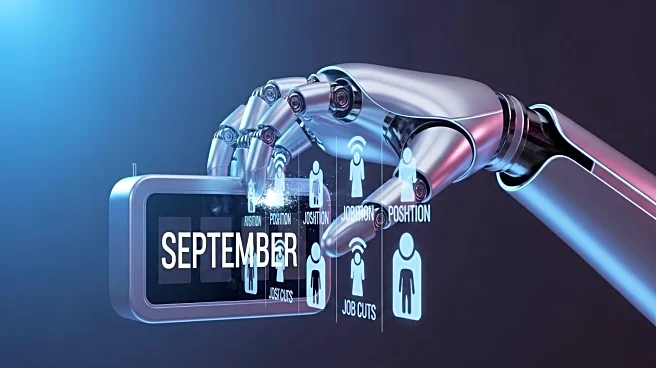What's Happening?
The tech industry is experiencing significant disruption due to artificial intelligence, leading to substantial job cuts. According to a report by Challenger, a Chicago-based outplacement firm, more than 17,000 job cuts have been attributed to AI this year, with 7,000 occurring in September alone. Andy Challenger, a senior vice president at the firm, noted that AI is not only eliminating jobs but also making it challenging for entry-level engineers to find positions. Companies like Salesforce have reduced their workforce significantly, with AI agents taking over customer service roles, resulting in a reduction from 9,000 to 5,000 employees. The report highlights the growing impact of AI on employment within the tech sector.
Why It's Important?
The rise of AI-driven job cuts underscores a transformative shift in the tech industry, affecting employment patterns and workforce dynamics. As AI technologies become more integrated into business operations, companies are increasingly relying on automation, which can lead to reduced demand for human labor. This trend poses challenges for workers, particularly those in entry-level positions, as they face increased competition and the need for new skills. The broader implications include potential changes in labor market dynamics, with industries needing to adapt to the evolving technological landscape. Stakeholders such as policymakers and educational institutions may need to address these shifts to ensure workforce readiness and mitigate unemployment risks.
What's Next?
As AI continues to reshape the tech industry, companies may further integrate AI solutions, potentially leading to more job cuts. This could prompt discussions among policymakers and industry leaders about the need for retraining programs and educational initiatives to equip workers with skills relevant to the AI-driven economy. Additionally, businesses might explore balancing AI implementation with human workforce needs to maintain employment levels. The ongoing evolution of AI technology will likely influence future employment strategies and industry practices.














